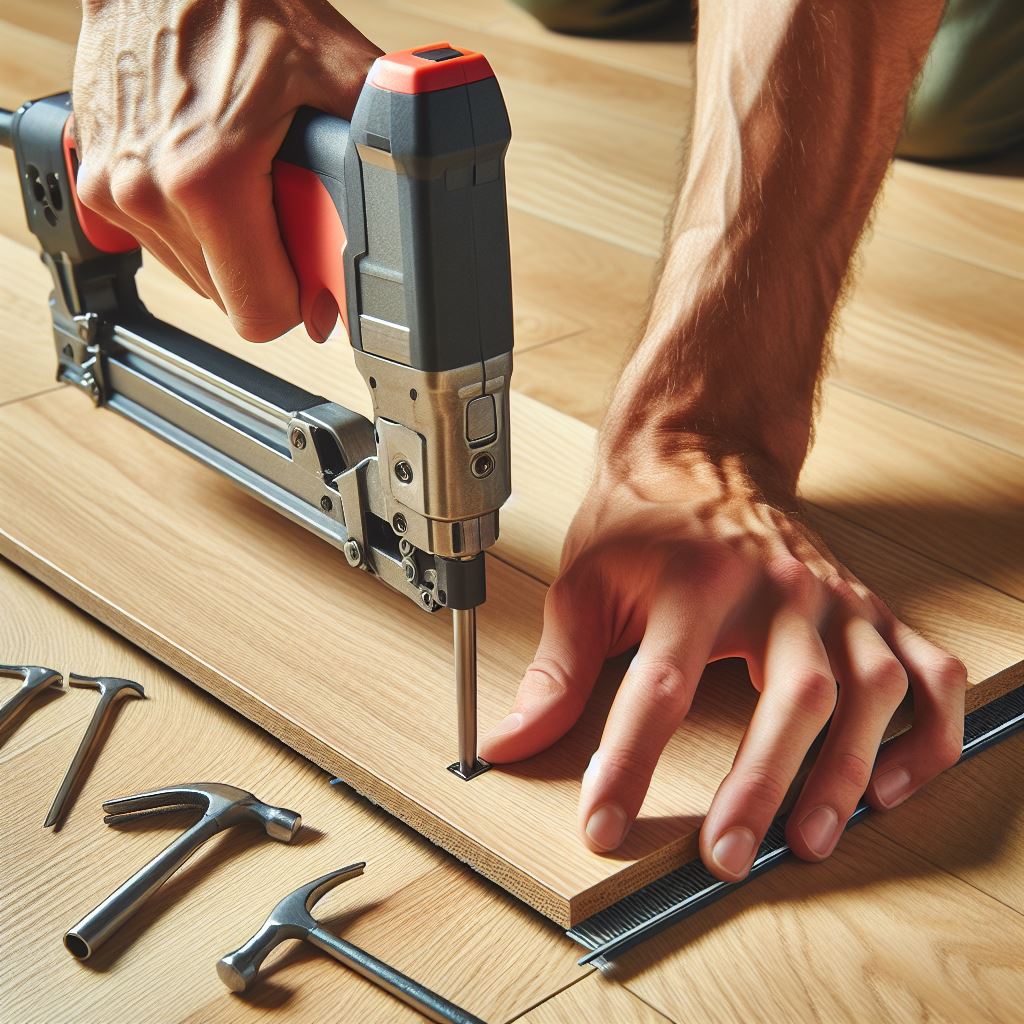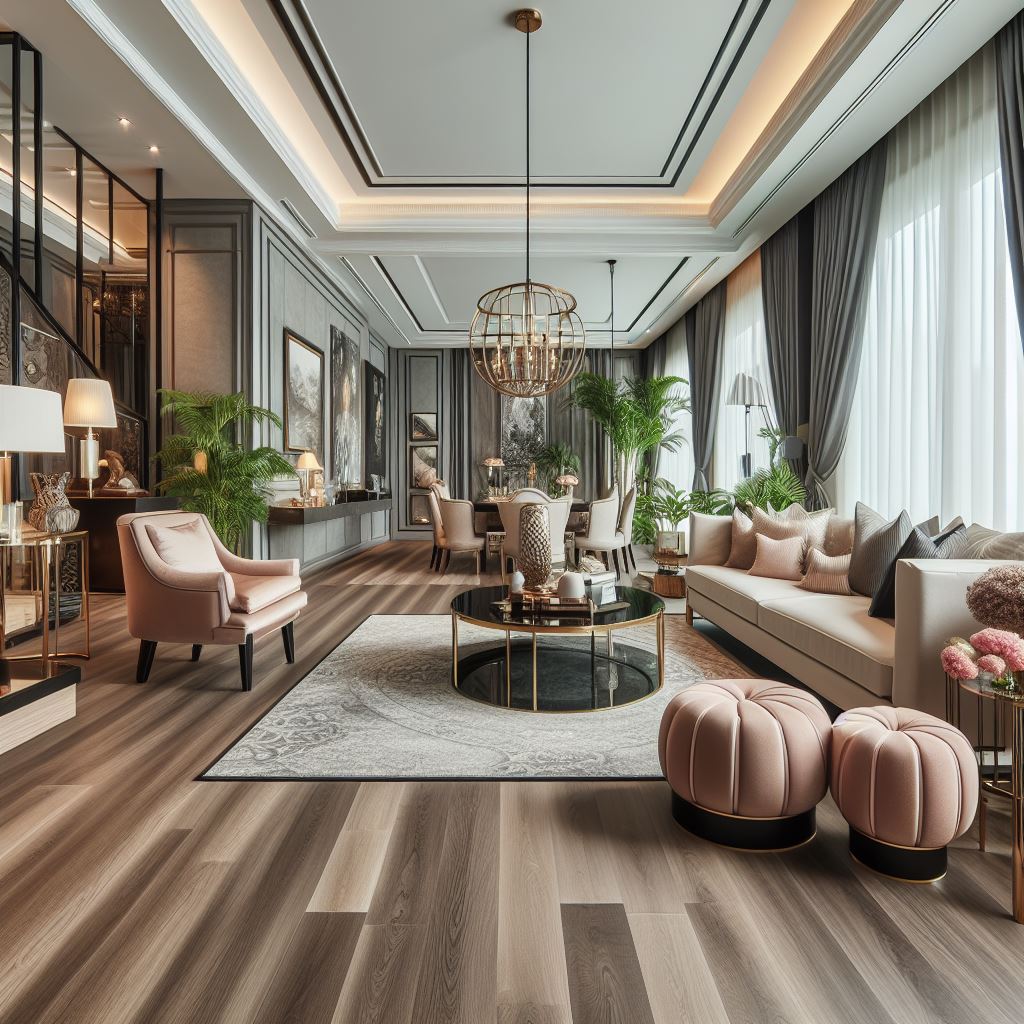Welcome to the world of engineered wood flooring, where durability meets design to create the perfect foundation for any Dallas Fortworth home. Unlike traditional hardwood, engineered wood floors are composed of multiple layers, with a top layer of hardwood veneer affixed to lower layers of high-quality plywood, creating a stable core that resists humidity and temperature variations. This innovative construction makes engineered wood an excellent choice for spaces where solid hardwood might warp or buckle.
When considering engineered wood flooring quality comparison, it's essential to look at factors such as the thickness of the top veneer, the type of core materials used, and the precision of the engineering process. These elements collectively influence the floor's longevity, resilience, and appearance. In Dallas Fortworth, where style and functionality go hand in hand, engineered wood flooring offers a versatile solution that can accommodate the region's diverse interior design preferences.
At Paradise Spaces, we understand the importance of finding the right floor for your space. That's why we invite you to Request a free estimate or email us at sales@paradise-spaces.com to explore our curated selection of high-quality engineered wood flooring. Our experts are dedicated to helping you make an informed decision that marries beauty with practicality.
As we delve deeper into the features that set engineered wood floors apart, let's examine the core attributes that determine their quality, so you can choose a product that not only looks stunning but also stands the test of time in your home.
Understanding Engineered Wood Flooring Layers

The anatomy of engineered wood flooring is a testament to modern flooring technology. At the heart of its design are several layers that work in tandem to provide strength and stability. The top layer, known as the wear layer, is a slice of real hardwood. This is what gives engineered wood flooring its authentic and attractive appearance. The thickness of this layer can vary, but it generally ranges from 2mm to 6mm. Thicker wear layers allow for more refinishing over the lifespan of the flooring.
Beneath the wear layer lies the core, which usually consists of multiple layers of plywood or high-density fiberboard (HDF). These layers are cross-structured to counteract the natural tendency of wood to expand and contract with changes in humidity and temperature. This cross-structuring not only adds dimensional stability but also makes engineered wood suitable for areas where solid hardwood might be at risk of damage, such as basements or over concrete slabs.
Some engineered wood products also include a bottom layer for additional stability. Often made from the same material as the core, this backing layer helps to balance the board and prevent bowing or cupping.
When conducting a engineered wood flooring quality comparison, it's crucial to understand these layers in detail. The choice of materials, thickness of each layer, and the quality of construction all play a significant role in the floor's durability and suitability for your home. The layer composition not only affects the performance and lifespan of the flooring but also impacts the feel underfoot and the ease of installation.
Moving forward, we will explore how the quality of these layers affects the overall performance and aesthetics of engineered wood flooring, ensuring you have all the information needed to make the best choice for your space.
Comparing Engineered Wood Flooring Durability

The durability of engineered wood flooring is a key factor when considering a flooring solution for any space, especially in high-traffic areas. Durability in engineered wood floors is largely influenced by the thickness of the top veneer, also known as the wear layer. A thicker wear layer means the flooring can withstand more wear and tear, and can be sanded down and refinished multiple times, much like solid hardwood.
Another significant aspect of durability is the core construction. Floors with a high-quality plywood core exhibit excellent resistance to environmental changes, maintaining their form against moisture and temperature fluctuations. Conversely, a lesser quality core may be more prone to warping or swelling under similar conditions.
The finish applied to the surface of engineered wood flooring also plays a substantial role in its durability. High-quality finishes, such as aluminum oxide or polyurethane, act as a protective shield against scratches, dents, and stains, thereby extending the life of the flooring.
In a engineered wood flooring quality comparison, it's also important to note that the type of wood species used for the top layer can affect durability. Harder woods like oak, maple, and hickory are known for their resilience and longevity, while softer woods may be more susceptible to damage over time.
As we delve deeper into the specifics of engineered wood flooring, we will consider how the right combination of wear layer thickness, core construction, and finish can provide a durable flooring solution that stands the test of time, ensuring your investment is both beautiful and long-lasting.
Aesthetics of Engineered Wood Flooring Varieties

Engineered wood flooring offers a plethora of aesthetic options to homeowners, ranging from traditional to contemporary designs. The versatility in appearance is one of the standout features of engineered flooring, allowing it to seamlessly integrate with any interior style. The top layer of engineered wood, crafted from real hardwood, provides the authentic look and feel that is highly sought after.
The variety extends to the wood species used for the veneer, which include popular choices like oak, maple, and hickory, as well as exotic woods like acacia and teak. Each species brings a unique grain pattern and color, offering a broad spectrum of visual appeal. Additionally, the veneer can be stained in a range of hues, from natural tones to deeper stains, further amplifying the design possibilities.
Texturing techniques such as hand scraping, distressing, or wire brushing add character and depth to engineered wood floors, creating a lived-in look that can complement rustic or industrial decors. For a sleek, modern aesthetic, smooth finishes with minimal texturing provide a clean and refined appearance.
When considering engineered wood flooring quality comparison, one must not overlook the plank width and installation patterns that contribute to the floor's overall aesthetics. Wider planks can create a sense of openness and are currently en vogue, while narrower strips can produce a more traditional look. Herringbone, chevron, and parquet patterns are options for those desiring a distinctive and sophisticated flooring layout.
Ultimately, the aesthetics of engineered wood flooring are defined by the combination of these elements, each contributing to the creation of a space that resonates with the homeowner's personal style and elevates the ambiance of their Dallas Fortworth home.
Evaluating Engineered Wood Flooring Manufacturers
When selecting engineered wood flooring, the manufacturer's reputation and track record are critical factors that can significantly influence the quality and longevity of the product. Reputable manufacturers adhere to stringent quality standards and utilize advanced technology to produce consistently superior flooring that stands the test of time.
It is important to conduct research on the manufacturers, considering aspects such as their sourcing of materials, manufacturing processes, and the range of products they offer. Companies that source their veneers from sustainably managed forests, and use eco-friendly adhesives and finishes, are not only making a positive environmental impact but are also likely to provide a healthier living environment for homeowners.
Another key aspect is the durability of the flooring, which is often a reflection of the manufacturing quality. High-quality engineered wood floors feature robust wear layers that can withstand daily foot traffic and resist scratches and dents. The thickness of the wear layer and the number of finish coats can be indicative of the floor's resilience.
Warranties offered by manufacturers can also inform buyers about the confidence a manufacturer has in their product. Longer warranty periods typically suggest a commitment to quality and customer satisfaction. However, it's essential to read the warranty terms carefully to understand what is covered and any maintenance requirements that must be fulfilled to keep the warranty valid.
Customer reviews and industry certifications can provide further insights into the manufacturer's reliability and the performance of their engineered wood flooring. Certifications like the FloorScore label, which indicates compliance with indoor air quality standards, can be especially important for discerning homeowners who prioritize health and safety alongside aesthetics and durability.
Ultimately, choosing a manufacturer with a solid reputation for quality and service ensures that your investment in engineered wood flooring is protected, and your flooring will retain its beauty and functionality over time.
Installation and Maintenance of Engineered Wood Floors

The final step in ensuring the longevity and beauty of your engineered wood flooring is proper installation and regular maintenance. Installation should ideally be handled by professionals who are well-versed in the specific requirements of engineered flooring. They will take into account factors such as subfloor moisture levels, room climate, and proper acclimatization of the flooring materials.
Once installed, maintaining your engineered wood floors is relatively straightforward. Regular sweeping or vacuuming to remove dust and debris is essential to prevent scratching. For more thorough cleaning, use a mop slightly dampened with a manufacturer-recommended cleaning solution. It's crucial to avoid excessive water as it can damage the floors over time.
Engineered wood flooring is also known for its resilience to temperature and humidity changes, making it an excellent choice for the Dallas Fortworth area's variable climate. However, maintaining a stable indoor environment will further protect your floors from warping and buckling. It's recommended to keep indoor humidity levels within the manufacturer's suggested range.
Minor scratches and dents can often be repaired with specialized wood floor repair kits, but deeper damage may require professional refinishing. Fortunately, high-quality engineered wood flooring allows for sanding and refinishing, although the number of times this can be done depends on the thickness of the wear layer.
To ensure that your engineered wood flooring is installed correctly and to learn more about maintaining its pristine condition, Request a free estimate or email us at sales@paradise-spaces.com. At Paradise Spaces, we're committed to providing you with top-notch service and expertise for all your flooring needs in the Dallas Fortworth area.
